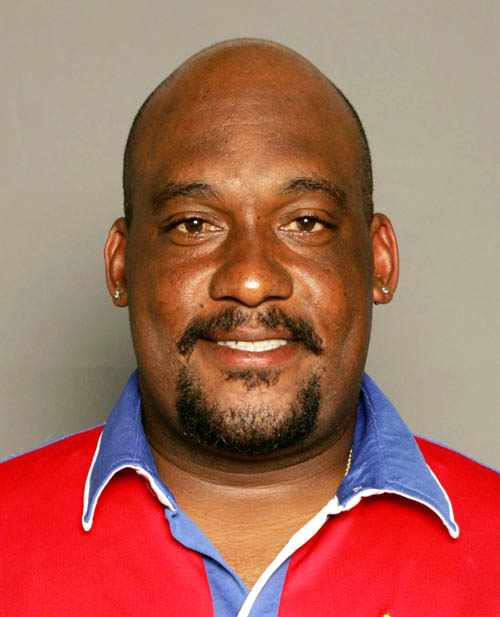 Cricket is one of the world's most statistical sports, and mathematicians in cricket-loving nations love nothing more than delving into the minutiae of the numbers and diving into averages, strike-rates and custom-made measures of batting and bowling effectiveness.
Cricket is one of the world's most statistical sports, and mathematicians in cricket-loving nations love nothing more than delving into the minutiae of the numbers and diving into averages, strike-rates and custom-made measures of batting and bowling effectiveness.
For many people, including me, cricket isn't just a sport, it is a way of life.
These words could easily have come from me, but are actually the words of Rob Eastaway, a cricket-loving mathematician from the UK, and originator of the official International Cricket Council cricket-ratings which rank not only teams, but players within each team. Over at The Mr Science Show podcast, I chat to Rob about how you mathematically rank cricketers.
Listen to this podcast here - note a few audio issues, see below:
Ranking individual batsmen and bowlers is no small task. A common method of comparing batsmen is their average, which is the average score the batsman compiles each time he comes in to bat. This method, however, has a number of issues as it does not take into consideration the opposition, playing conditions and how recently the runs were scored. How can you compare a score of 60 against a world-class opponent on a dodgy pitch with a score of 150 against a lowly rated team in easy batting conditions? This is what Eastaway's ranking system attempts to do - and the maths is quite difficult (far more difficult, in Rob's words, than the Duckworth-Lewis method of determining the winner in a rain-effected game!) As well as taking into consideration the strength of the opposition and playing conditions, the ranking system places a greater emphasis on recent performances. The overall system has a number of feed-back loops - the individual player ratings contribute to a team's rating, which effects how many rating points an opposition player can earn against that team - remember, a score of 50 against tough opposition will be worth more than 50 against low-class opponents. Similarly, how each player in a match performs influences how many points are on offer. For example, a score of 45 out of an overall team score of 100 will be more highly valued than a score of 45 out of 450. As such, large amounts of historical data are used to come up with the final numbers. Limited overs cricket has the additional dimension of strike-rate - a batsman who scores his runs quickly will be rated more highly than a slow scorer.
The system was first developed in 1987 by Eastaway with former English cricketer Ted Dexter and colleague Gordon Vince, and at first the system was greeted with scepticism by many cricket lovers. Nowadays, however, it has gained credibility and has even been used by international cricketers to help negotiate their contracts - for example, Michael Bevan was for a long time rated number one in the One Day International version of the rankings and used this in contract negotiations, however he could not secure a Test spot. Known originally as the Deloittes Ratings and in later years the PwC Ratings, the system was officially adopted by the International Cricket Council in January 2005.
With a background in Operations Research and a love of cricket, Eastaway is essentially my idol! You can read more about the maths of his system in his article Howzat in Plus Magazine.
As many of the equations used in this system are now copyrighted, you can't find the exact algorithms published anywhere. However, if you are a big nerd like me, you might like the book Deloitte Ratings: The Complete Guide to Test Cricket in the Eighties by Marcus Berkmann. The book details the ratings changes after each Test series in the 80s, and the appendix contains many of the equations which underpin the system. I was given this book when I was 10 and didn't much understand it back then, but I was very happy to find it in storage when I returned from the UK, and I now find it a maths-cricket-nerd's delight!
 I'm fascinated to know if they come up with something for Twenty 20. The ultra-shortened form of the game brings in loads more complexities, not least of which is that unless you are an opening batsman, you may not even get a bat! Here's hoping Australia can win the World Twenty20 - oh and The Ashes! If only I was in the UK this summer!
I'm fascinated to know if they come up with something for Twenty 20. The ultra-shortened form of the game brings in loads more complexities, not least of which is that unless you are an opening batsman, you may not even get a bat! Here's hoping Australia can win the World Twenty20 - oh and The Ashes! If only I was in the UK this summer!I hope you enjoy this podcast - however, please note there are some audio issues. I had a great chat with Rob in a cafe in London, however my recording equipment was set on the wrong setting and so captured a lot more background noise than I had hoped! So please hang in there - this was one of my very favourite interviews. Rob is a fascinating person and had some really interesting observations on maths and sport. I really shouldn't have gone to The Chemical Brothers the night before, I probably would have had the microphone on the right setting!
Listen to this podcast here:


